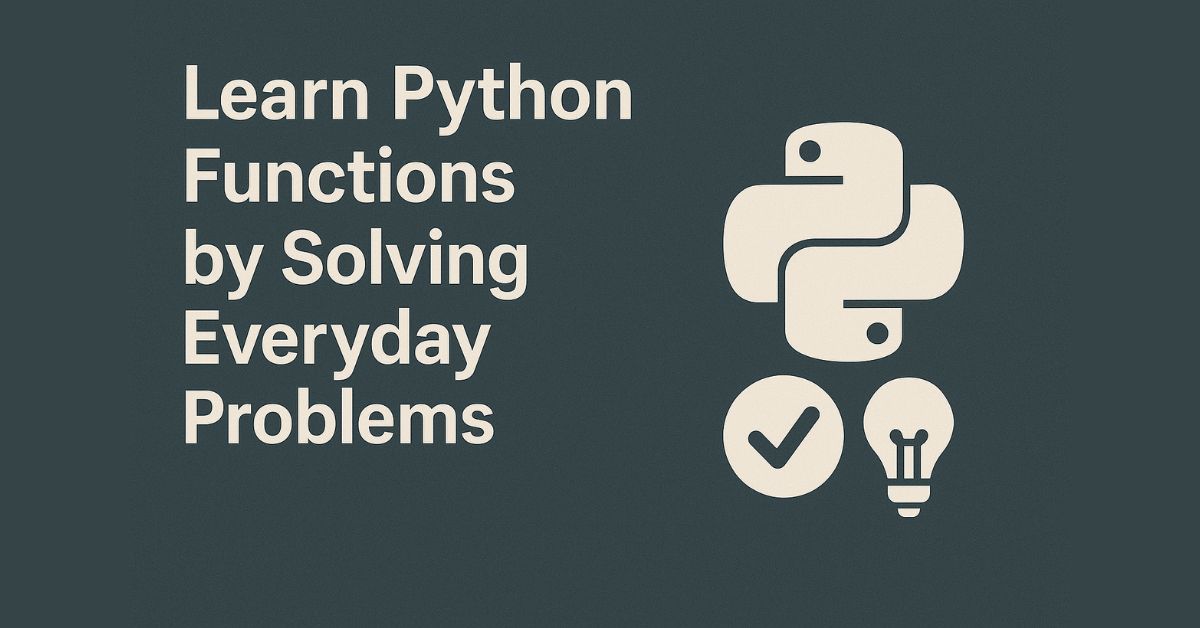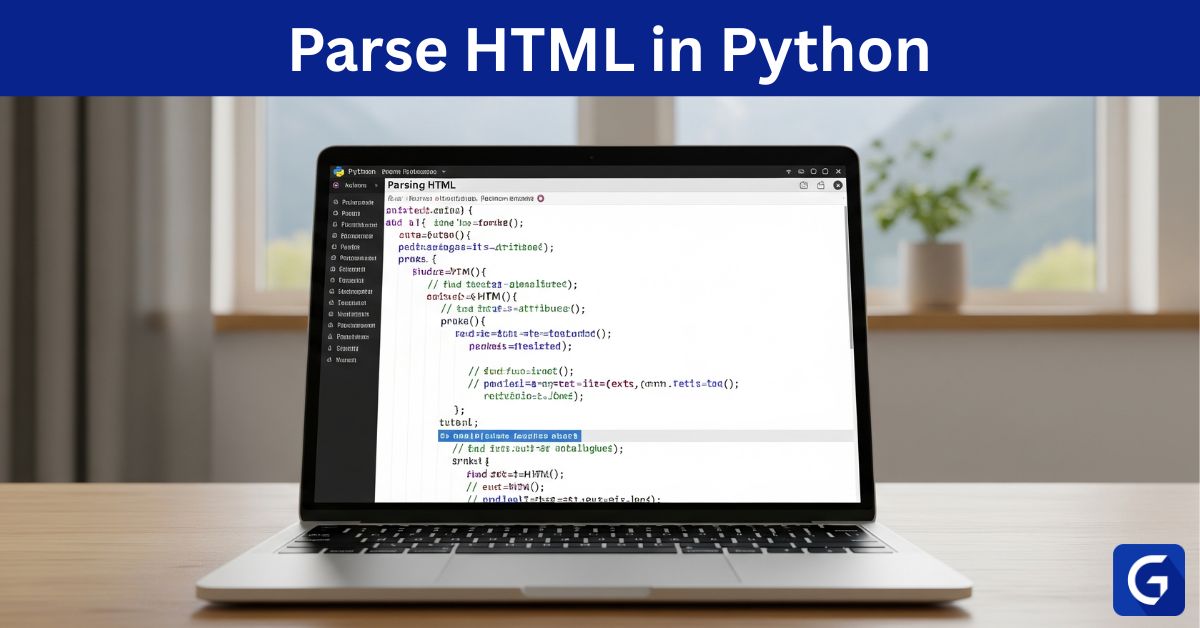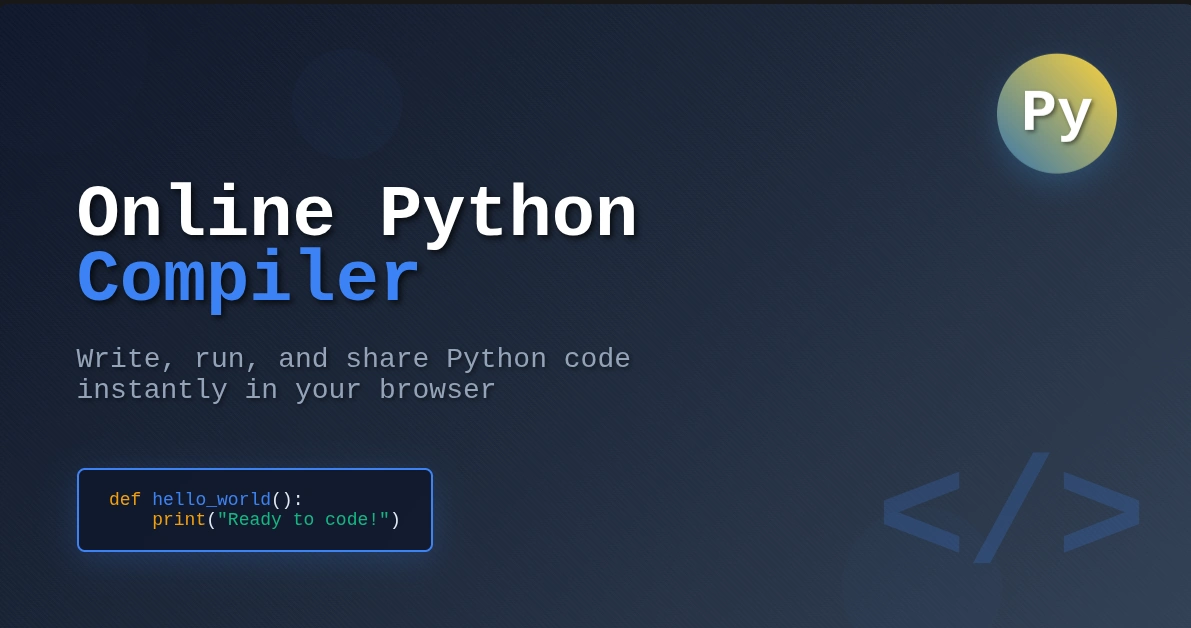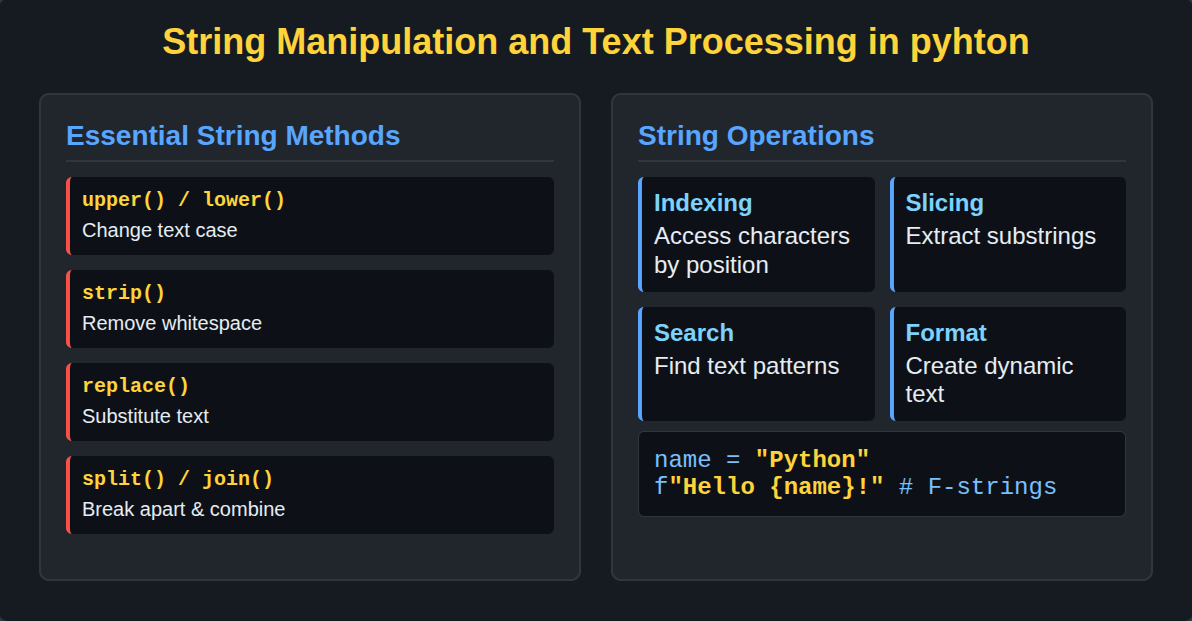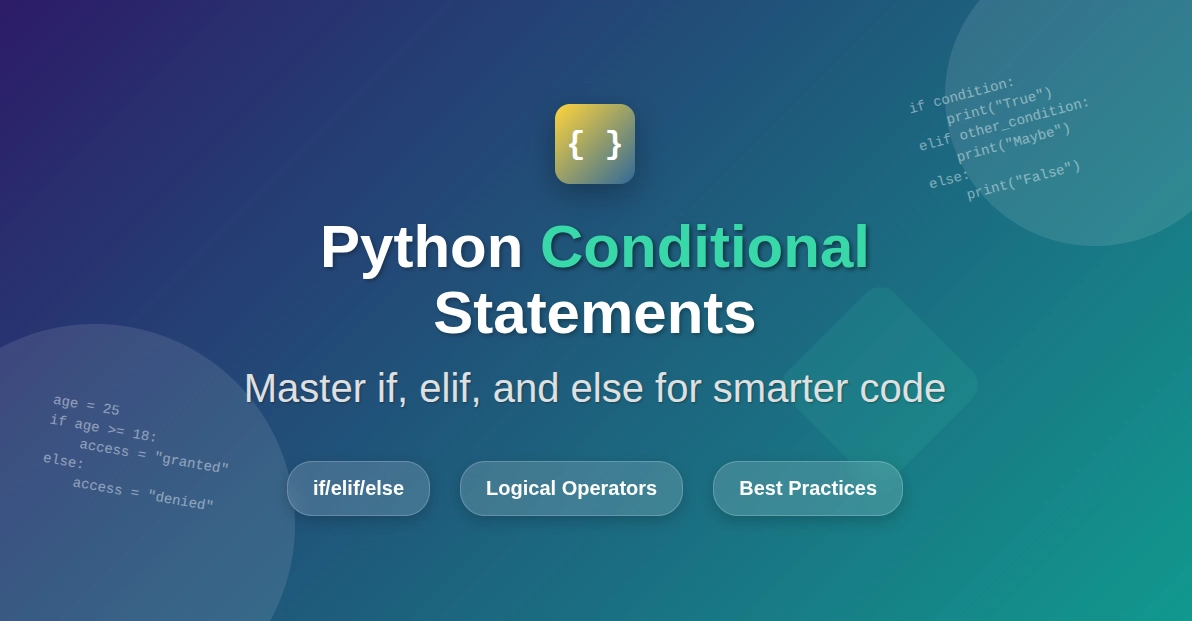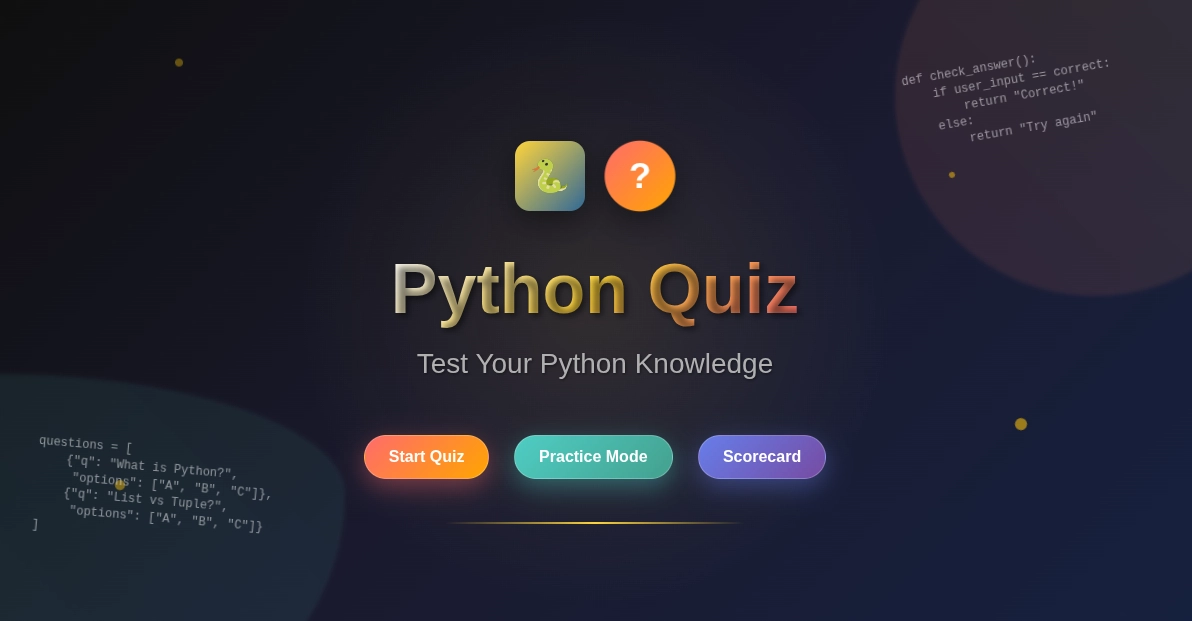- What Are Functions in Python?
- Why Use Functions?
- Task #1: Calculate Grocery Bill
- Task #2: Daily Routine Timer with Multiple Functions
- Task #3: Package Shipping Cost Calculator with Parameters
- Task #4: Simple Note App with Optional Parameters
- Task #5: Send Bulk Emails with List Iteration
- Task #6: Return Multiple Values (e.g., Min & Max Temperatures)
- Task #7: Temperature Converter with Docstrings
- Pro Tips for Mastering Functions
- Summary
- Want to Learn More?
- Conclusion
- Frequently Asked Questions(FAQ’s)
In Python, all programming functions are the building blocks of clean, reusable, and efficient code. Whether you’re automating chores, processing data, or developing web apps, understanding how to define and use functions correctly is a skill every developer must master.
This practical guide breaks down Python functions using everyday tasks: from calculating expenses to sending messages. By the end, you’ll know how to write, nest, and return from functions like a pro.
What Are Functions in Python?
Functions are named blocks of code designed to perform specific tasks. You define them once and reuse them wherever needed, making your code DRY (Don’t Repeat Yourself).
def greet(name):
print(f"Hello, {name}!")
Here, greet() is a simple function that takes an argument and prints a personalized message.
Learn how to arrange your Python scripts well by studying the Python main() function and the value of the if __name__ == ‘__main__’ code. This aids in maintenance and control of code in the right order.
Why Use Functions?
- Reusability: Code once, use multiple times.
- Modularity: Break a problem into sub-tasks.
- Debugging: Isolate bugs in specific areas.
- Scalability: Handle growing complexity more easily.
Task #1: Calculate Grocery Bill
Let’s create a function to calculate the total cost of a grocery list.
def calculate_total(items):
total = 0
for item, price in items.items():
total += price
return total
grocery_list = {'Milk': 2.5, 'Eggs': 3.0, 'Bread': 1.8}
print(f"Total Bill: ${calculate_total(grocery_list):.2f}")
What You Learned:
- How to define and call a function with a dictionary parameter.
- How to return a result using return.
In this course, you will learn the fundamentals of Python: from basic syntax to mastering data structures, loops, and functions. You will also explore OOP concepts and objects to build robust programs.
Task #2: Daily Routine Timer with Multiple Functions
Break down a morning routine using functions.
def wake_up():
print("Waking up at 6:30 AM...")
def brush_teeth():
print("Brushing teeth for 2 minutes...")
def make_coffee():
print("Brewing coffee... ☕")
def morning_routine():
wake_up()
brush_teeth()
make_coffee()
morning_routine()
Highlights:
- Composing functions by calling them inside another function.
- Organizing tasks into logical units.
Task #3: Package Shipping Cost Calculator with Parameters
Calculate shipping cost based on weight and distance.
def calculate_shipping(weight, distance):
rate_per_kg = 5
rate_per_km = 0.1
cost = (weight * rate_per_kg) + (distance * rate_per_km)
return round(cost, 2)
print("Shipping Cost:", calculate_shipping(10, 250)) # 10 kg, 250 km
What You Practiced:
- Multiple parameters
- Return with calculations
Task #4: Simple Note App with Optional Parameters
Use default arguments for optional behavior.
def write_note(text, timestamp=True):
from datetime import datetime
if timestamp:
print(f"{datetime.now()}: {text}")
else:
print(text)
write_note("Call Mom")
write_note("Buy groceries", timestamp=False)
You Learned:
- Optional/default parameters
- How to make functions flexible
Task #5: Send Bulk Emails with List Iteration
def send_bulk_email(recipients, message):
for email in recipients:
print(f"Sending to {email}...\n{message}\n")
contacts = ["alice@example.com", "bob@example.com", "carla@example.com"]
msg = "Hello! Just checking in. Hope you're well."
send_bulk_email(contacts, msg)
You Practiced:
- List iteration inside functions
- Clean, repeated logic through abstraction
Task #6: Return Multiple Values (e.g., Min & Max Temperatures)
def min_max_temps(temps):
return min(temps), max(temps)
week_temps = [21.1, 22.5, 19.8, 23.3, 20.4]
low, high = min_max_temps(week_temps)
print(f"Lowest: {low}°C, Highest: {high}°C")
Concepts:
- Tuple unpacking
- Returning multiple values
Task #7: Temperature Converter with Docstrings
def celsius_to_fahrenheit(c):
"""Converts Celsius to Fahrenheit"""
return (c * 9/5) + 32
print(f"30°C = {celsius_to_fahrenheit(30):.1f}°F")
Good Practice:
- Add “””docstrings””” to explain function purpose
- Keeps code readable and self-documented
Bonus: Lambda Functions for Quick Tasks
When you need a quick function without formally defining it.
square = lambda x: x * x
print(square(6)) # Output: 36
Use lambda functions for:
- Sorting
- Filtering
- One-liners inside loops or mappings
Learn how to identify Armstrong numbers with practical examples in Python by exploring the detailed guide on Armstrong Number in Python.
Pro Tips for Mastering Functions
Use type hints for clarity:
def greet(name: str) -> None:
print(f"Hi, {name}")
- Write pure functions, no side effects (ideal for testing).
- Keep functions short and single-purpose.
- Use *args and **kwargs for flexible inputs when needed.
Summary
| Concept | Covered Example |
| Function definition | def greet(name): |
| Parameters/Return | Grocery calculator, shipping logic |
| Composition | Morning routine |
| Optional arguments | Note-taking app |
| Iteration | Email sender |
| Multiple returns | Min-max temp checker |
| Lambda use | Quick square example |
Functions are the foundation of logical programming. Practicing them through day-to-day examples helps you grasp not just how they work, but why you use them. Master this, and your Python skills will jump significantly.
Want to Learn More?
- Learn deeply about OOP Basics in Python and how functions play a role inside classes.
- Understand the difference between Python and Java function handling.
Conclusion
Knowing functions in Python is about both syntax and splitting problems into pieces of code. Time spent calculating your bills, organizing your emails or setting up habits will naturally help you write more efficient coding programs.
When your projects are larger, you need your functions to be tidy, useful in different situations and have good documentation. No matter if you are taking coding interviews, creating apps or automating your life, effective use of functions in Python separates strong developers from the rest.
Work on extra use cases, go beyond the examples provided and once you’re confident with the essentials, start learning about things like recursion and decorators.
Frequently Asked Questions(FAQ’s)
1. When a function returns None, what should we understand from this?
If you don’t use return in a function in Python, it will automatically return None. Normally, functions like this carry out an action, for example, printing or changing a variable. It indicates that the result returned makes no sense.
2. Can you call a function before you create it in Python?
Python reads and runs lines of code from the beginning to the end. Calling a function that doesn’t exist at the moment will cause an interpreter error and raise a NameError. Always make sure to define your functions ahead of where you use them in your script.
3. Is it okay to define functions inside other functions?
Yes, Python allows defining functions inside other functions, known as nested functions. These are typically used for encapsulating functionality that’s only relevant within the outer function. It helps keep the code organized and limits the scope of inner logic.
4. Why use *args and **kwargs in functions?
The *args and **kwargs syntax lets you handle functions with a flexible number of arguments. *args is used for passing a list of positional arguments, while **kwargs handles keyword arguments. This makes your function more reusable and adaptable.
5. Do Python functions always need parameters?
No, parameters in a function are optional and depend on the use case. You can define functions that take no arguments and still perform meaningful tasks, such as printing messages or accessing global variables. It all depends on the logic you’re implementing.
